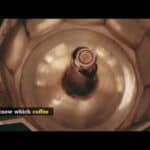Are you curious by how your percolator works? If you do it well, percolated coffee has a terrific, rich coffee flavor. Hot water is heated until it rises via a tube into the coffee grinds in the top filter basket in this coffee technique. After that, they slowly drip back into the pot before being recirculated through the grounds.
A percolator is similar to a drip coffee maker, except that the percolated brew is stronger than drip since it is recirculated through the grounds. The stovetop percolator and the electric percolator are the two types of percolators available. Let’s have a look at how each one works!
How The Stovetop Percolator Works
Stainless steel, aluminum, or glass are commonly used for cooktop percolators. To perk coffee, place the percolator immediately on top of the stove burner. Because there are no electric components in these pots, they are simple to clean.
You’ll want to double-check the coffee-to-water ratio. To obtain a consistent brew every time, measure the amount of water and coffee you use. A ratio of 1:15 coffee to water is recommended. For every 15 milliliters (or grams) of water, 1 gram of coffee is used. One tablespoon of ground coffee for every 75 milliliters (or grams) of water is another rule of thumb to follow.
Simply fill the bottom of the pot with cold water and place your coffee grounds in the top basket to perk coffee on the stovetop. Use medium heat and remove the brew from the flame before it reaches a rolling boil. Perked coffee is ready when bubbles hit the glass lid every few seconds or so, according to a rule of thumb.
You’ll want to develop a routine and an understanding with your stovetop percolator. The stovetop method can quickly get overprocessed and taste scorched if you miss the “golden window” and leave your brew perking for too long.
Traditionalists who like the brewing process will choose the stovetop approach… and for those who are willing to take a chance with their first cup of coffee every morning.
If you desire a perked taste but also want a consistent brew, an electric percolator can be a nice option for you. In case you are looking for best coffee percolator, we have a list of recommendation you can use as reference.
How The Electric Coffee Percolator Works
The electric percolator handles a lot of the intricacies for you, but the stovetop percolator requires you to bring all of your coffee knowledge to bear in order to get a great cup of coffee. They have the same setup as their stovetop counterparts, with a reusable filter basket for grounds on top and water at the bottom. They do not, however, come with a stove as a heat source; instead, they have their own electric base.
Most electric percolators can time the brew and switch it off when the coffee is ready. If your percolated coffee is too strong for you, you may still manually modify the brew time by setting a timer and disconnecting it when you’re done.
The ultimate result should be a cup of coffee that tastes similar to a french press and (in my opinion) better than a drip coffee machine.
Coffee aficionados are constantly on the lookout for the perfect cup of java. To attain excellence, each brewing process has its own “best practice.”
You should consider the beans you use, the roast, the grind, and the coffee to water ratio when making a great cup of coffee with an electric percolator. While other aspects like as brewing time and water temperature are crucial, your electric coffee maker should take care of them for you.
Choosing Your Coffee Beans
When choosing the best coffee bean for your percolator, stay away from beans cultivated in Papua New Guinea, Ethiopia, and Kenya because they have high acidity. In high-heat methods, more mellow beans from Columbia, Brazil, and even Indonesia will make a far better pot.
Because percolation uses greater temperatures than many other brew methods, nuanced tastes and coffee characteristics won’t show up effectively with an electric percolator. If you have more artisan beans, you may want to use a different method, like as a french press, to best showcase them.
However, the roast you choose is crucial. Because the coffee recirculates through the grounds, dark roasts will soon become bitter in a percolator. To have a powerful, rich flavor without getting overprocessed, use medium to light roasts.
Was this helpful?
Hi there! I’m a food enthusiast and journalist, and I have a real passion for food that goes beyond the kitchen. I love my dream job and I’m lucky enough to be able to share my knowledge with readers of several large media outlets. My specialty is writing engaging food-related content, and I take pride in being able to connect with my audience. I’m known for my creativity in the kitchen, and I’m confident that I can be the perfect guide for anyone looking to take their culinary journey to the next level.








